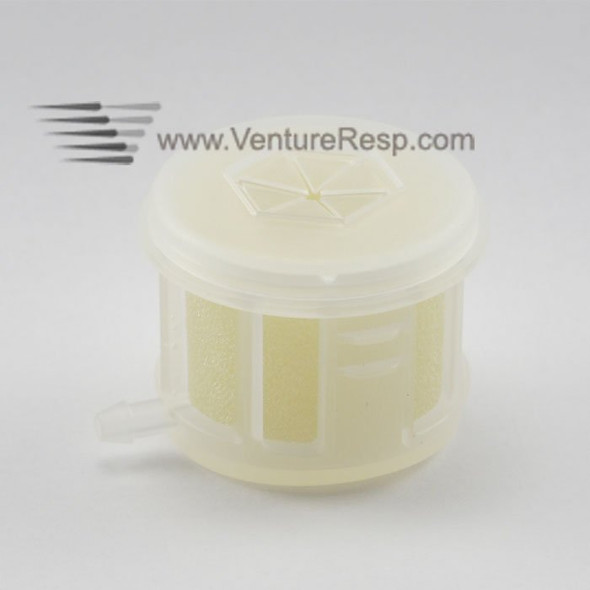AirLife Edith 500 HME (#557056200) contains 30 Heat and Moisture Exchangers per Case. The Edith 500 HME was designed with some special features, including low breathing resistance, low dead space and marginal loss of moisture.
AirLife Edith 500 HME has a clear casing, so it's easy to conclude when the HME needs to be replaced. The Heat and Moisture Exchanger is suitable to be utilized under various conditions, such as in intensive care units and operation rooms. AirLife Edith 500 HME , are intended for use in adult and pediatric patients.
Specifications
| Technical data | | | | | |
| Maximum tidal volume (mL) | 500 | 1,000 | 1,500 | 1,500 | 1,000 |
Moisture output (mg H2O/L)
• Measured at VT (mL) | 321 /301
250/500 | 301 /291
750/1,000 | 31.51 /30.51
750/1,000 | 33.511 /32.51
750/1,000 | 242
500 |
Moisture loss (mg H2O/L)
• Measured at VT (mL) | 5.51 /7.51
250/500 | 7.51/8.51
750/1,000 | 6.01 /7.01
750/1,000 | 4.011 /5.01
750/1,000 | 13.52
500 |
Pressure drop (kPa/cmH2O)
• At 30 L/min
• At 60 L/min |
0.08/0.81
0.2/2.01 |
0.1/1.01
0.25/2.51 |
0.1/1.01
0.25/2.51 |
0.05/0.51
0.14/1.41 |
â€"
0.02/0.2 |
| Dead space (mL) | 17
| 28 | 38 | 90 | 16 |
| Weight (g) | 6 | 8 | 9 | 20 | 6 |
Connectors
• Patient side
• Machine side |
22 M/15 F
15 M |
22 M/15 F
15 M |
22 M/15 F
15 M |
15 F
22 F |
15 F
- |
1. Measured according to standard ISO 9360:2000. 2. Moisture loss is determined using dry gas (not room air). These products are in conformity with the relevantprovisions of the Council Directive 93/42/EEC, concerning medical devices, Annex I - Essential Requirements.
Changing frequency:
Change the frequency of Edith HME use after everypatient or every 24 hours, when used continuously onthe same patient.
Contraindications:
Edith HMEs are contraindicated in patients producingfulminating, frothy secretions within their airways andlungs. Edith HMEs should not be used on patients withvery small tidal volumes, such as neonates or very smallchildren. They should not be used with active humidifiersor nebulizers.
Connections:
Edith HMEs intended for artificially ventilated patientsshould be placed between the proximal end of the artificialairway and the Y-piece of the breathing circuit. The EdithTrach should be placed on the tracheostomy tube.
Features
- Minimal and stable moisture loss over time, helping ensure that patients conserveadequate heat and moisture
- Low breathing resistance, reducing work of breathing for the patient
- Low weight, adding to patient comfort and safety
- Low dead space, helping ensure adequate patient ventilation
- Latex-free materials, offering safer use with all patients
- Transparent housing, helping to determine when to replace the HME
- A wide range of products, meeting various requirements
- Design compliant with ISO standards, standardizing connector sizing









